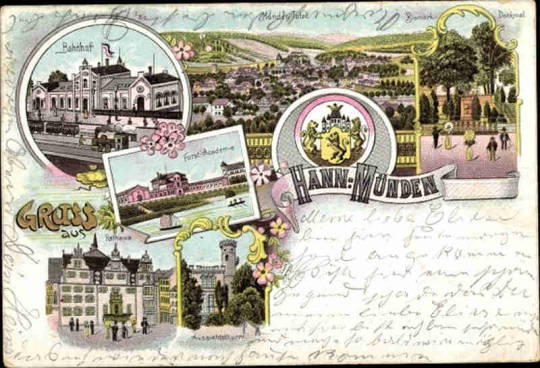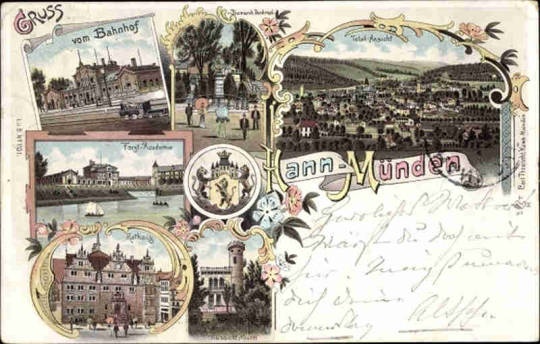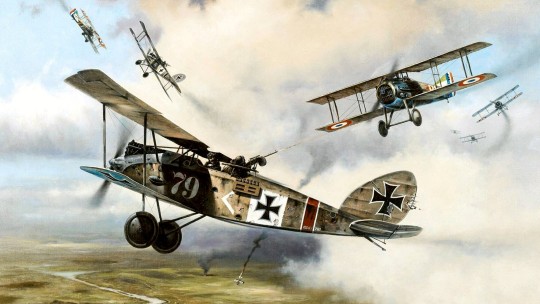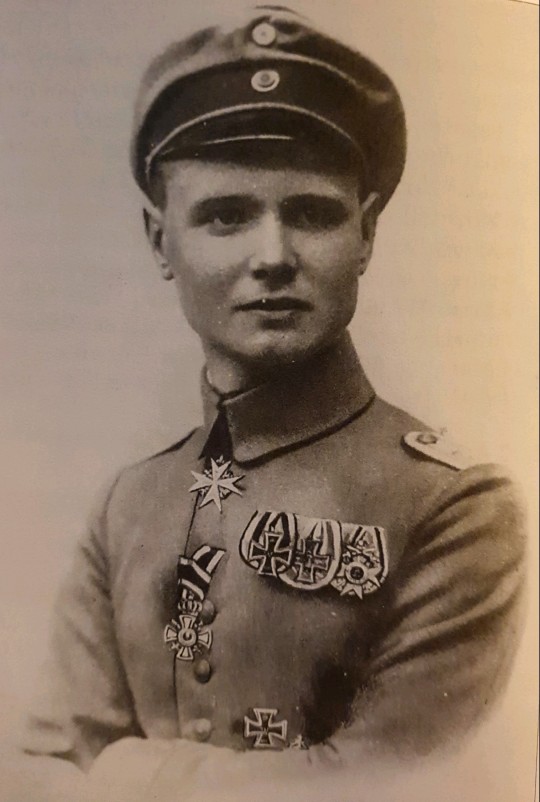#hannoversch
Text

Hann. Münden, Germany 1920s
#Hann.#Hannoversch#Münden#1920s#Germany#german#history#past#vintage#1900#photo#photography#picture#old#deutschland#geschichte#alte#fotos#bilder#black and white#architecture#half-timbered#cobblestone#people#street life#europe#car
16 notes
·
View notes
Text

Greetings from Hannoversch Münden, Lower Saxony, Germany
German vintage postcard, mailed in 1895
#postkaart#mnden#carte postale#greetings#briefkaart#hannoversch münden#old#hannoversch#sepia#postkarte#vintage#postal#lower saxony#germany#photography#saxony#lower#mailed#ephemera#postcard#1895#tarjeta#photo#ansichtskarte#historic#german
7 notes
·
View notes
Photo

Hannoversch Munden, Lower Saxony.
67 notes
·
View notes
Text
Eigentlich wollen wir ja nach Prag …
… aber gekommen sind wir nur bis Thüringen.
Bodenfelde an der Weser bis Dorndorf an der Werra240 KilometerGefahren vom 10. bis zum 13. September
Wir finden: Neben dem Mai ist der September ist doch eigentlich die schönste Reisezeit. Es ist nicht mehr so heiß, meist trocken und das Licht ist anheimelnd. Auch sind weniger Leute unterwegs und die Campingplätze nicht so voll. Traditionell haben wir…

View On WordPress
#Bad Sooden-Allendorf#Bikepacking#Camping#Creutzburg#Eschwege#EV13#Fietsen naar Praag#Hannoversch-Münden#Hessen#Iron Curtain Trail#Probsteizella#Radwandern#Thüringen#Treffurt#Werratal-Radweg#Weser#Weserradweg#Witzenhausen
0 notes
Video
decisions, decisions por lina zelonka
Via Flickr:
hannoversch münden (niedersachsen, germany) *** instagram / tumblr
#hannoversch münden#hann münden#niedersachsen#lina zelonka#lower saxony#meinniedersachsen#flowers#market#blumen#markt#fachwerk#half-timbered#fachwerkhaus#marktplatz#market place#market square#europe#deutschland#germany#nikon d7100#18-105mm#flickr
1 note
·
View note
Text


HANN. MUNDEN / Hannoversch Münden / GERMANY
1 note
·
View note
Text
"Beutetürken"
Zum ersten Mal wurde jetzt in #Hannover eine Straße türkisch benannt – ganz heimlich, still und leise. Sie erinnert an Hammet und Hassan - zwei sogenannte „#Beutetürken“. via @tazgezwitscher
Zum ersten Mal wurde jetzt in Hannover eine Straße türkisch benannt – ganz heimlich, still und leise. Sie erinnert an zwei sogenannte „Beutetürken“, informiert die taz und schreibt:
“Auf einmal war es da, das Straßenschild. „Hammet-und-Hassan-Weg“ steht da, und darunter: „Nebenan bestattete Hofdiener, die im 17. Jahrhundert als Kriegsgefangene nach Hannover kamen. Ihre muslimischen Gräber gehören…

View On WordPress
#17. Jahrhundert#Beutetürken#Gräber#Hammet-und-Hasan#Hammet-und-Hassan#Hannover#Hannoversche Allgemeine Zeitung#Jannik Schnare#Lotte-Loebenstein-Straße#Straßenbenennung
0 notes
Text
Straßenbahn: Da müssen wir ran Kurzfristige Änderungen auf den Linien M1, M5 und 12: Aufgrund eines Schienenbruchs im Kreuzungsbereich …, aus BVG
Straßenbahn: Da müssen wir ran Kurzfristige Änderungen auf den Linien M1, M5 und 12: Aufgrund eines Schienenbruchs im Kreuzungsbereich …, aus BVG
06.10.2022
Kurzfristige Änderungen auf den Linien #M1, #M5 und #12: Aufgrund eines #Schienenbruchs im Kreuzungsbereich #Torstraße / #Hannoversche Straße / #Chausseestraße / #Friedrichstraße können die Straßenbahnen dort aktuell nicht auf gewohnter Strecke fahren. Zur Behebung des Schadens müssen die Gleise in diesem Bereich nun zunächst weiträumig ersetzt werden, da sie durch die im engen Takt…
View On WordPress
#12#Brunnenstraße#Chausseestraße#Ersatzverkehr#Fahrzeugverkehr#Friedrichstraße#Hannoversche#Individualverkehr#M1#M5#Schienenbruchs#Torstraße
0 notes
Text

Sibylle Bergemann. Hannoversche Straße, Berlin, circa 1970.
171 notes
·
View notes
Text
92 notes
·
View notes
Text

Train of the day is: Siemens/Schlick/Halske "Old lady" of the Budapest Millennium Underground! ( X )
Only one of such cars is still in operation(number 11 above), but only on specific nostalgia events. They received many refurbishments since their first years in operation, and none resemble the originals' looks 100%. After 70 years, they were scrapped, and got replaced by Ganz MillFAV(fun fact:the make doesn't have an official name!) articulated units. A few other units beside number 11 were also saved after the replacement of the cars in various museums:
-Number 12, Hannoversches Straßenbahn-Museum
-Number 18, Seashore Trolley Museum, Kennebunkport, Maine (donated by Brno Museum of Technology)
-Number 1 & 19, Földalatti Vasúti Múzeum (images from the inside)
#Metro week#...and this concludes metro week! submissions received during the week have been queued and tagged 'Train of the day'!
49 notes
·
View notes
Text

Greetings from Hannoversch Münden, Lower Saxony, Germany
German vintage postcard, mailed in 1909 to Budapest, Hungary
#lower#historic#budapest#1909#photo#briefkaart#vintage#lower saxony#hannoversch münden#hannoversch#sepia#photography#carte postale#mnden#postcard#mailed#postkarte#postal#tarjeta#ansichtskarte#old#ephemera#postkaart#hungary#german#greetings#saxony#germany
9 notes
·
View notes
Text
youtube
Johann Adolph Hasse : Trio Sonata in E minor No. 1 Op. 2
[00:00] I. Largo [02:05] II. Presto [04:59] III. Siciliano [06:45] IV. Allegro
Hannoversche Hofkapelle :
Laurence Dean, flute
Christina Ahrens-Dean, flute
Bernward Lohr, harpsichord
5 notes
·
View notes
Text

1917 10 The Forge - Heinz Krebs
High above the trenches on the Western Front, German aviator Gustav Boehl and his gunner are engaged in mortal combat as their Halberstadt CL II comes under attack from French Spads. It's the dawn of a new age in military history, and a new weapon is being forged, the aerial force. In the late stages of World War One German military commanders recognized a growing necessity for the close protection of reconnaissance and artillery control aircraft. As a result the so-called "Schutzstaffeln" (protection units) came into beingThe typical aircraft model used by such units were "C" type aircraft which were subsequently replaced by lighter machines known as "CL" type aeroplanes. Popular manufacturers of CL types were the "Hannoversche Waggonfabrik" and the "Halberstaedter Flugzeugwerke" as well as, later in the war, the Junkers aircraft company.Although aircraft made by the "Hannoversche Waggonfabrik" were designed by German aviation pioneer Claude Dornier, they weren't near as popular with German combat crews as the aircraft made by the "Halberstaedter Flugzeugwerke". Due to their agility and speed, their airplanes, only slightly larger dimensioned than single seat fighters, were especially well suited for use with the "Schutzstaffeln".On October 13th, 1917 Gustav Boehl was transferred from the military flight training unit "Armeeflugpark 4" to the front line unit "Schutzstaffel 19", where he served as a combat pilot in the rank of a Sergeant. "Schutzstaffel 19" was renamed "Schlachtstaffel 19" (Schlasta 19) on March 27th, 1918. The "Schlachtstaffeln" are commonly regarded as the forerunner of the fighter bomber units in later years of military aviation history.In the spring of 1918 such a "Schlachtstaffel" would have typically consisted of six aircraft, mostly either Halberstadt CL IIs or CL IVs. The units were commanded by a Lieutenant or First Lieutenant, himself not necessarily a pilot. The pilots were routinely non-commissioned officers, the gunners normally being corporals or privates. These gunners were often able to master more than just their close support routine. This was impressively demonstrated by one of their ranks, Gottfried Ehmann who managed to down a total of 12 attacking fighter aircraft during the course of his military carreer.
26 notes
·
View notes
Text
Emil Schäfer - Part 1
Family
Carl Maria Emil Schäfer was born on 17 December 1891. Named after his father, he went by the name Emil. He had two younger sisters. His father was a fabric manufacturer; two things Emil had in common with his flying comrade Werner Voss whose father had the same profession and also was from the city of Krefeld in western Germany. They also went to the same school, not at the same times though as Werner was six years younger.

Military service and Work
After his graduation in 1911 Schäfer had to do compulsory military service but was able to join the Einjährigen-Programm, so he only had to do it for one year instead of the standart two years. He chose to serve with the Hannoversches Jäger-Battailon Nr. 10 (Infantry) in Goslar.
After that, Schäfer was destined to join his father's company and become a merchant. For that he did internships with some of his father´s business colleagues. He had the opportunity to go to London and then to Paris, making him fluent in English and French. Originally he had planned to stay in France for some years, but the year was 1914 so destiny had other plans for him. His father came to Paris to bring him back to Germany, eventhough the imminent threat of war wasn´t yet taken seriously from neither the Schäfers nor their French colleagues: “We joked about our departure, drank to seeing each other again soon, and separated as the best of friends”.

War time service 1914 - 1915
Schäfer, in the rank of Oberjäger, tried to rejoin his old regiment, but was ordered to Westfälisches Jägerbataillon Nr. 7. His first mission was the occupation of Liège, Belgium after its capture the days before. His task was to secure the train station and the bridges around the city. But Schäfer was eager for a more active role in the war: “Hopefully we'll get to the enemy soon. I don't like the police service anymore”. His wish soon came true, and on September 1st his unit is deployed for the storming of Maubeuge. After several days of shelling the fort, they managed to take it. 52,000 men on the French side were captured by 18,000 German troops. After that they were supposed to march on Paris but another unit needed help and after a march of almost 100 km in two days they managed to prevent an enemy breakthrough of the lines.
On September 26, 1914, the course of the war changed for Emil Schäfer when he was shot in the leg while taking the town of Chivry. He had to spend almost 7 months in hospitals and in rehab before he could walk again. The result of the injury was a shortened left leg, which made it difficult for him to walk long distances. He returned to his unit in April 1915 which was still in the same area where he last left them; the city taken and the soldiers deep in the trenches. There he stayed until the end of 1915. He had started to get bored and was also struggling with his injury; his leg was healed, but he found it difficult to walk and stand for long periods of time.
Pilot
In January 1916 Schäfer started his pilot training in Köslin. After successful graduation he was sent to Russia in July to join Staffel 8 of Kampfgeschwader 2. His main task was to attack Russian positions with bombs and machine gun fire. “We start twice or three times a day. Occasionally tethered balloons are charred and Russian planes shot down.”

Emil wrote extensively to his parents, describing a day in the life of a pilot: “At 4:45 in the morning my orderly appears and throws me out of bed, half an hour later I appear in my oldest and dirtiest outfit in the dining car, where the gentlemen from squadron 8 and 9 gradually arrive. Coffee, milk, sugar, bread and occasionally a little butter is delivered. Almost everyone still has a pot of jelly, jam, butter or sausage. This first breakfast is very hearty and plentiful, because if you are unlucky, it must be enough for the whole day. Then we go to the airport. When we arrive, the planes are ready. I walk around my good old machine, checking a turnbuckle here and there, then I get attracted. Schubert helps me into my flight pants, buttons, buckles, zips up the various fasteners, has crash aids, goggles and gloves ready. The squadron leader gathers the six crews around him and issues the order. My observer and I now go back to our plane. The plane is started, we take off. Six minutes after the start we are almost 1000 meters high. We're over the city on time, I'm heading straight for the train station and the bombs are already falling. 600 kilograms of the most powerful explosive ammunition poured over the buildings and facilities. Then we go home. The square is lively now. The fitters take over the machines. The observers gather with the squadron leader and report; the pilots still have work to do on the machines, are talking to the fitters, the foreman, and to each other. When everything is done, it's off to the cars and home to the residential train, where everything is discussed again in detail over the second, also very thorough, breakfast.”
In January 1917 Kampfgeschwader 2 was sent to the Western Front. Schäfer was now part of a Jagdstaffel (fighter squadron), flying single seater fighter planes. His first victory almost cost him his life, having to crash land after shooting down a French flyer. Now that he had a taste for being a real fighter pilot, he turned to a former comrade he met in Russia: Manfred von Richthofen, who had recently taken over the leadership of his own Jadgstaffel. In mid-February, Schäfer got the okay to switch to Jasta 11.
10 notes
·
View notes

